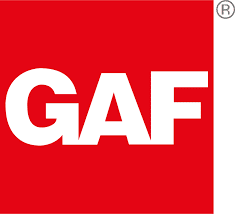While living or doing business in our state of Colorado offers stunning natural beauty, it also presents unique challenges, especially when it comes to protecting our properties against the elements. From pounding hailstorms to gusty winds and heavy snowfalls, Colorado’s dynamic climate can subject roofs to a barrage of challenges.
In this guide, we’ll talk about how age can affect your roof’s coverage, how old a roof must be for most insurance companies to stop providing coverage, and what you can do to keep your home protected.
How Does the Age of a Roof Affect Insurance Claims?
The short answer is this: A roof cannot be denied coverage just based on its age.
One thing to keep in mind, though, is that when your roof reaches a certain age, some companies will stop covering its replacement cost value (RCV), and instead switch over to actual cash value (ACV). The difference between replacement cost value and actual cash value is a big deal. That’s because an RCV policy will pay for repairs and replacements based on current rates, whereas an ACV policy will only cover damages minus depreciation.
In other words, if your 16-year-old roof gets destroyed by a hailstorm, an RCV policy will pay for a brand-new roof; an ACV policy will only pay up to the value of your old roof (which may not be very much).
Will Insurance Cover Replacing an Old Roof?
The short answer is yes, but (yes there is a but) there are a ton of exceptions and you should ask your insurance agent for details on what your policy does and does not offer. Even then, if you have an RCV policy on a 25-year-old roof that is in rough shape and there is serious storm damage, the insurance company will pay to replace the roof at current market value.
For example, if a storm damages a 25-year-old roof, by letting it sit there, the roof will most definitely have leaks and holes. A hailstorm can wreck a brand-new roof, but it SHREDS an old roof. Most homeowners have been paying into premiums for many years and they should get a new roof before the old one starts to leak. That being said, not doing so may result in paying for a new roof out of pocket because the damage is too old to claim.
Will insurance cover a 10-year-old roof?
A 10-year-old roof is typically still within the lifespan of many insurance policies. Coverage considerations may vary depending on the specific policy and circumstances surrounding the claim, such as the cause of damage and the condition of the roof. Again, the amount that your company ends up paying will depend on whether you have an RCV or ACV policy.
For example, let’s say your 10-year-old roof has an actual cash value of $8,000, your policy’s deductible is $2,000, and your roof has sustained $12,000 worth of damage. With a replacement cost value policy, your insurance should cover $10,000 out of the total replacement cost of $12,000. (Total cost – your deductible). With actual cash value, however, it will only cover $6,000 (your roof’s actual cash value – your deductible), leaving you to pay for the additional $6,000 on your own.
Will insurance cover a 15-year-old roof?
As roofs age, coverage considerations become more complex. A 15-year-old roof may still be eligible for coverage under many insurance policies, but insurers may scrutinize its condition more closely. A 15-year-old roof may still be in relatively good condition, but insurance companies may assess its eligibility for coverage based on factors such as maintenance history and wear and tear.
Property owners should be prepared to provide documentation to support their claims, including maintenance records, photographs, and repair estimates. By demonstrating that their roof is well-maintained and structurally sound, property owners can increase their chances of obtaining coverage for roof replacement.
Will insurance cover a 20-year-old roof?
Some insurance companies may offer actual cash value policies for roofs that are 20 years old. It’s good to remember that once your roof hits the 20-year mark, its roofing membrane has likely exceeded its expected life span. That means there could be a score of issues inside your roofing system (like moisture problems, insect infestations, structural damage, etc.) that insurance companies don’t want to deal with.
As a reminder, we suggest filing a roof insurance claim before the old one starts to leak, causing out-of-pocket expenses. While the process may seem intimidating, the team at Axe Roofing can walk alongside you to make it easier.
Will insurance cover a 25-year-old roof?
Coverage considerations for a 25-year-old roof become increasingly challenging, with insurers potentially reluctant to provide coverage for roofs of this age. Homeowners and commercial property owners may need to explore alternative options or strategies for protecting their properties, such as specialty insurance policies or self-insurance strategies. By working with insurance professionals and exploring creative solutions, property owners can mitigate the risk of damage and protect their investments effectively.
Preventative Measures and Maintenance
Regular roof maintenance is key to prolonging a roof’s lifespan and preventing costly damage. Simple preventative measures, such as regular inspections, gutter cleaning, and minor repairs, can go a long way in maintaining the integrity of your roof.
Routine inspections allow property owners to identify potential issues early and address them before they escalate into costly repairs. During inspections, property owners should look for signs of damage such as cracked or missing shingles, water stains on ceilings, and signs of water infiltration in attics or crawl spaces. Additionally, clearing debris from gutters and roof surfaces can prevent water buildup and reduce the risk of water damage.
Repairing minor issues promptly can prevent them from worsening over time and causing more extensive damage to the roof and underlying structures. Property owners should address issues such as loose or damaged shingles, deteriorating flashing, and small leaks as soon as they are discovered. By staying proactive and addressing maintenance needs promptly, property owners can extend the lifespan of their roofs and minimize the need for costly repairs or replacements.
Deductibles and Coverage Limits
Understanding the financial aspects of your insurance policy is crucial for managing potential out-of-pocket expenses. Deductibles and coverage limits play a significant role in insurance claims for roof replacement. Armed with this knowledge, you can make informed next step decisions.
Deductibles are the amount of money that property owners are responsible for paying out of pocket before their insurance coverage kicks in. Deductible amounts can vary depending on the policy and coverage options selected by the property owner. Typically, policies with higher deductibles have lower premiums, while policies with lower deductibles have higher premiums. Property owners should consider their financial situation and risk tolerance when selecting a deductible amount.
Coverage limits refer to the maximum amount that an insurance policy will pay out for a covered loss. Property owners should review their policy limits carefully to ensure they have adequate coverage for potential expenses. If coverage limits are insufficient, property owners may be responsible for covering the difference out of pocket. Additionally, some policies may have sub-limits for specific types of damage, such as hail or windstorm damage, which can further impact coverage.
Policy Endorsements and Riders
In addition to standard policy coverage, you may have the option to enhance your protection with endorsements and riders. These add-ons provide specialized coverage for specific risks or circumstances. For example, ordinance or law coverage may cover the cost of bringing your roof up to current building codes during replacement.
Policy endorsements and riders offer property owners the flexibility to tailor their insurance coverage to suit their specific needs and circumstances. Common endorsements include additional coverage for high-value items, increased liability coverage, and coverage for specific perils such as earthquakes or floods. By understanding the available endorsement options and their implications, property owners can ensure they have comprehensive protection for their properties.
Disputes and denials of insurance claims can be frustrating and challenging to navigate. In the event of a dispute or denial, it’s essential to understand your rights and options for recourse. By advocating for yourself and understanding the claims process, you can increase your chances of a favorable outcome.
Disputes and denials of insurance claims can arise for various reasons, including coverage disputes, claim denials, and disagreements over the extent of damage. Property owners should be prepared to provide thorough documentation to support their claims, including photographs, repair estimates, and communication with their insurance company.
Final Thoughts
The insurance process for a roof replacement can be long, tedious, and stressful. However, having the right roofing contractors on your side can help to alleviate the anxiety you may feel. At Axe Roofing, we’re committed to helping our neighbors get through the insurance process with minimal stress and exceptional results. For example:
- We’ll promptly come out to assess your roof’s current condition, and let you know whether repairs are called for, or your roof needs to be replaced.
- We’ll perform an in-depth inspection of your roofing system as needed, and let you know of any serious issues that need to be resolved in order to maintain coverage.
- We’ll walk you through the insurance process step by step. Even though we’re not insurance agents, we have decades of experience working with roofing insurance claims and know the industry inside and out.
If you’d like to learn more about how we can help, contact Axe Roofing today! Whether your roof is new or old, we can help you to live with peace of mind, knowing that your home is protected, and that expert help is just a click or phone call away.
Related Articles:














